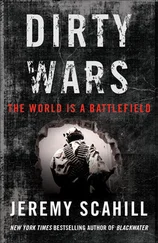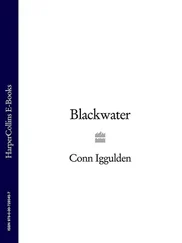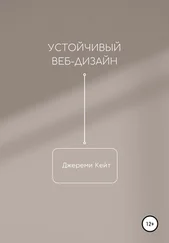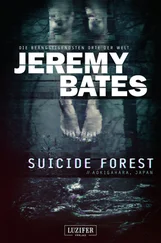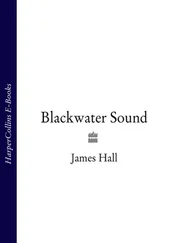As images from inside Fallujah emerged, primarily via journalists from Arab television networks, portraying a dire humanitarian crisis in the city, protests began spreading across Iraq, with U.S. forces using violence in an effort to shut them down. 23Mosques in Baghdad and elsewhere began organizing humanitarian convoys to Fallujah and stockpiling blood. 24By April 8, local hospital officials inside the city painted a horrifying picture of the human suffering, saying that upwards of 280 civilians had been killed and more than 400 wounded. 25“We also know of dead and wounded in various places buried under the rubble but we cannot reach them because of the fighting,” said Dr. Taher al-Issawi. 26The U.S. military denied it was killing civilians and accused resistance fighters of trying to blend into the broader population. “It is hard to differentiate between people who are insurgents or civilians,” said Maj. Larry Kaifesh. “It is hard to get an honest picture. You just have to go with your gut feeling.” 27
Byrne, according to the Washington Post , “said any bodies were those of insurgents. He estimated that 80 percent of Fallujah’s populace was neutral or in favor of the American military presence.” 28That optimistic pronouncement, however, did not match the ferocity of the resistance that succeeded—at an incredible human cost—in keeping the United States from totally capturing control of the city. “The enemy was better prepared than the Marines had been told to expect,” wrote veteran Washington Post reporter Thomas Ricks. 29He cited an internal Marine summary of the battle. “Insurgents surprise U.S. with coordination of their attacks: coordinated, combined, volley-fire RPGs, effective use of indirect fire,” the summary stated. “Enemy maneuvered effectively and stood and fought.” 30
As the siege neared a week, bodies began piling up in the city and, according to witnesses, a stench of death spread across Fallujah. “Nothing could have prepared me for what I saw in Fallujah,” recalled a doctor from Baghdad who made it into the city with a peace delegation. “There is no law on earth that can justify what the Americans have done to innocent people.” 31Independent U.S. journalists Dahr Jamail and Rahul Mahajan, meanwhile, managed to make it into Fallujah—unembedded—a week after the siege began. Upon entering the city with a humanitarian convoy, Jamail described the scene at a makeshift emergency room at a small health clinic. “As I was there, an endless stream of women and children who’d been sniped by the Americans were being raced into the dirty clinic, the cars speeding over the curb out front as their wailing family members carried them in. One woman and small child had been shot through the neck,” Jamail wrote in a dispatch from inside the besieged city. “The small child, his eyes glazed and staring into space, continually vomited as the doctors raced to save his life. After 30 minutes, it appeared as though neither of them would survive.” 32Jamail said he saw one victim after another brought into the clinic, “nearly all of them women and children.” 33Jamail called Fallujah “Sarajevo on the Euphrates.” 34
Mahajan, meanwhile, reported: “In addition to the artillery and the warplanes dropping 500, 1000, and 2000-pound bombs, and the murderous AC-130 Spectre gunships that can demolish a whole city block in less than a minute, the Marines had snipers criss-crossing the whole town. For weeks, Fallujah was a series of sometimes mutually inaccessible pockets, divided by the no-man’s-lands of sniper fire paths. Snipers fired indiscriminately, usually at whatever moved. Of 20 people I saw come into the clinic I observed in a few hours, only five were ‘military-age males.’ I saw old women, old men, a child of 10 shot through the head; terminal, the doctors told me, although in Baghdad they might have been able to save him. One thing that snipers were very discriminating about—every single ambulance I saw had bullet holes in it. Two I inspected bore clear evidence of specific, deliberate sniping. Friends of mine who went out to gather in wounded people were shot at.” 35Jamail reported that “the residents have turned two football fields into graveyards.” 36
While most of the world came to understand the siege of Fallujah as an earth-moving development in the occupation, the story of the extent of the human suffering endured by Iraqis was downplayed in the “mainstream” U.S. press. Embedded corporate journalists reported exclusively from the vantage point of the invading U.S. forces and relied disproportionately on military spokespeople and their Iraqi proxies. The graphic verbiage that had peppered the media landscape following the ambush and killing of the Blackwater men days earlier was now absent from the reporting on the civilian consequences of the assault. As battles continued to rage on and spread to the outskirts of Fallujah, New York Times correspondent Jeffrey Gettleman—totally avoiding mention of the humanitarian disaster—wrote that the fierce fighting “showed not only the intensity of the resistance but an acute willingness among insurgents to die .” 37[Emphasis added.] Coming alongside U.S. military claims that “90 to 95 percent” of Iraqis killed in Fallujah were combatants, 38such embedded reporting from the U.S. “paper of record” appeared almost indistinguishable from official U.S. military propaganda. “It’s their Super Bowl,” Maj. T. V. Johnson, a Marine spokesman, was quoted as saying in Gettleman’s story. “Falluja is the place to go if you want to kill Americans.” 39
But while the embedded U.S. press focused on the “urban warfare” story, unembedded Arab journalists—most prominently from the popular Al Jazeera network—were reporting around the clock from inside the besieged city. Their reports painted a vivid picture of the civilian devastation and gave lie to U.S. commanders’ pronouncements about precision strikes. Al Jazeera and Al Arabiya broadcast images of corpses in the streets and destruction of the city’s infrastructure. In fact, when Brig. Gen. Mark Kimmitt was doing a phone interview on Al Jazeera, insisting the United States was observing a cease-fire, the network simultaneously aired live images of continued raids by U.S. fighter jets on residential neighborhoods inside Fallujah. 40The images Al Jazeera’s cameras captured in Fallujah were not only being broadcast widely in the Arab world but also on TV networks across the globe. Veteran Al Jazeera journalist Ahmed Mansour and cameraman Laith Mushtaq had entered Fallujah on April 3 and were the primary source of footage of the civilian devastation in the city. They regularly filmed scenes of women and children killed by the U.S. offensive—in one case broadcasting a story about an entire family in the al Jolan neighborhood who had allegedly been killed in a U.S. airstrike. “The planes bombed this house, as they did for the whole neighborhood, and they brought the corpses and bodies to the hospital,” Mushtaq recalled. “I went to the hospital. I could not see anything but, like, a sea of corpses of children and women, and mostly children, because peasants and farmers have usually a lot of children. So these were scenes that are unbelievable, unimaginable. I was taking photographs and forcing myself to photograph, while I was at the same time crying.” 41
Mansour, who is one of Al Jazeera’s best-known personalities, said he realized early on that there were only a handful of journalists inside the city and believed he had a responsibility to remain in Fallujah, despite the enormous risk. “I wanted to report this reality to the whole world. I wanted the whole world to know what’s happening to those besieged people. I wasn’t thinking about leaving the city at all. I decided to stay and let my destiny be as those of people. If they die, I’ll be with them; if they escape, I’ll be with them. I decided not to think about any possibilities, what the U.S. forces will do with me if they catch me, and not to think about my family or anything. I only think about those people.” 42In the midst of the siege, Mansour reported live from Fallujah, “Last night we were targeted by some tanks, twice… but we escaped. The U.S. wants us out of Fallujah, but we will stay.” 43Despite its firm grip on embedded U.S. correspondents, Washington was losing the global propaganda war—so U.S. officials attacked the messenger. On April 9, Washington demanded that Al Jazeera leave Fallujah as a condition for a cease-fire. 44The network refused. Mansour wrote that the next day “American fighter jets fired around our new location, and they bombed the house where we had spent the night before, causing the death of the house owner Mr. Hussein Samir. Due to the serious threats we had to stop broadcasting for a few days because every time we tried to broadcast the fighter jets spotted us [and] we became under their fire.” 45
Читать дальше




